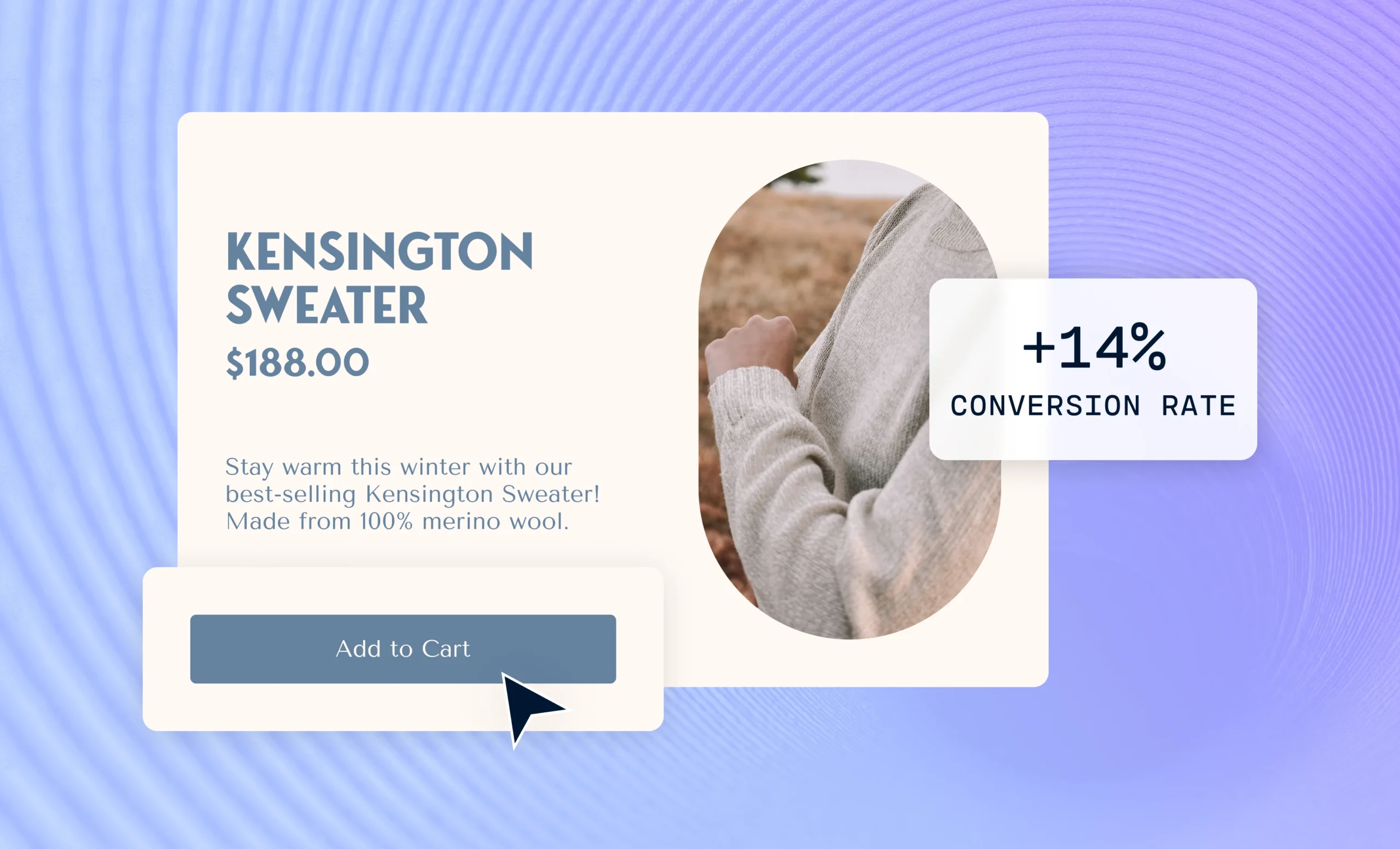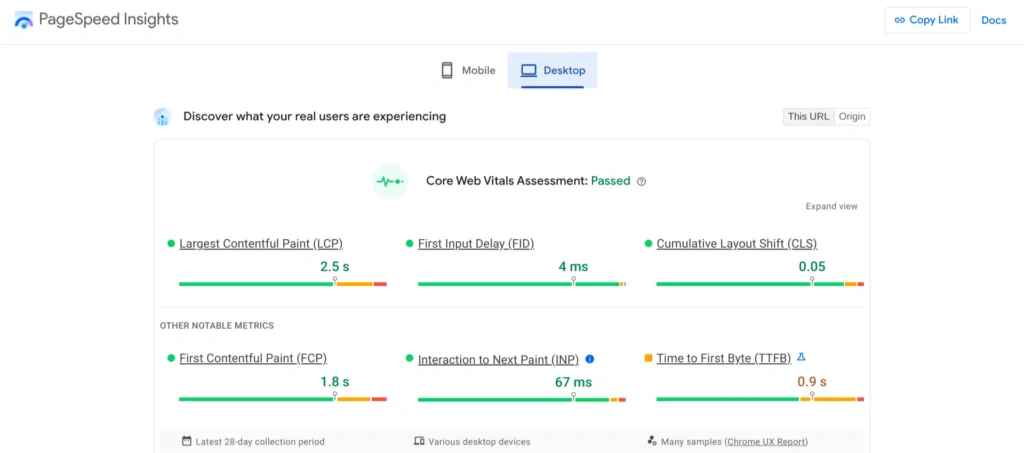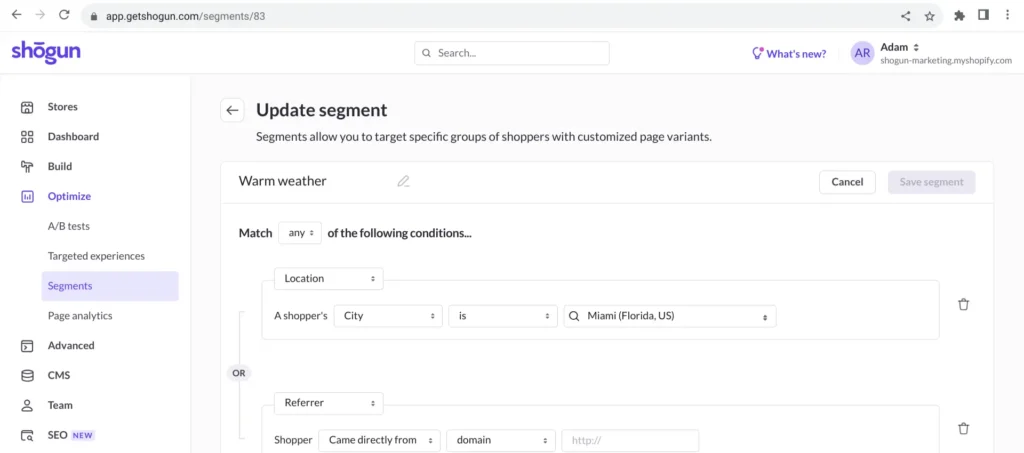How the Pros Increase Their Product Page Conversion Rate

Traffic volume is certainly important in ecommerce. The more people you attract to your online store, the more chances you’ll get at converting visitors into customers.
Are you making the most of those chances? Success in ecommerce requires not just volume, but conversion rate efficiency.
In this guide, we’ll take you through the tried-and-true techniques that digital marketing professionals rely on to increase the conversion rate of product pages.
In this post you, will learn about:
- Improving page performance
- Mapping high-traffic keywords to headings
- Optimizing “above the fold” content
- Increasing relevance through custom product page experiences
Improve Page Performance and Speed
If your product pages take a long time to load, a lot of visitors are going to back out before you even get a chance to convert them into a customer.
Just a few seconds can make a huge difference — the average ecommerce conversion rate for sites that load within one second is 2.5 times higher than sites that take five seconds.
Here are a few tips that will help you improve the performance of your product pages:
- Image optimization: Images are often the largest files featured on product pages. While you need to give visitors a good look at what you’re selling, multiple large, high-resolution images may be too much for your product page to handle. You must strike a balance between image quality and overall site performance. If you’re having performance issues, try lowering the resolution of your product images, reducing the size of your images, or using an image compression app.
- Lazy loading: There’s no need to load everything on your product page all at once. Only loading images and other demanding pieces of content as needed, a practice known as lazy loading, can result in dramatically improved performance. For example, you could set up your product page so that images featured below the fold (meaning visitors need to scroll down to see them) only load if visitors actually scroll down.
- Tech stack consolidation: You may have installed third-party software to help improve the appearance and functionality of your storefront. While such software can be beneficial, keep in mind that each app you add can affect performance — some significantly so. Immediately remove any third-party tools that you no longer use. If there are any apps that you only occasionally use, consider whether they are truly necessary. And if you’ve installed multiple tools that do similar things, consolidate down to one. Reducing your third-party tool stack is one surefire way to reduce the load times of your most critical site pages.
For a detailed breakdown of how your product pages are performing, check out Google’s PageSpeed Insights. In addition to providing you with performance data, this tool will show you how to fix any issues that may be present as well.

Map Traffic-Driving Keywords to Headings Throughout the Product Page
Another way to increase your conversion rate is to ensure that when visitors land on your product page, they see what they expect to see.
This only makes sense, of course. If someone lands on a page for flip flops expecting to see information about hiking boots, the odds are pretty slim that you’re going to get a conversion.
In order to meet expectations, you’ll need to know where your visitors are coming from in the first place. Google Search Console can show you which specific search queries are sending visitors to each of your pages. Also, if you’re using your product page as a landing page for a paid advertising campaign, think about what the visitor would expect to see based on your ad copy.
Once you have a handle on which keywords are generating the most traffic, be sure to include these phrases in prominent parts of the page, such as the title and section headings. This will increase the relevance of the product page to the visitor and improve your odds of making the sale.
Create customized product page experiences with ShogunBuild unique product pages that are relevant to the site visitor with Shogun Get started now
A/B Test Different Combinations of Content “Above the Fold”
The content featured above the fold is crucial for your conversion rate. If done well, many of your visitors will buy your product or at least scroll down to learn more. But if the above-the-fold content is poorly designed or doesn’t match visitor intent, you’ll probably get a quick bounce instead of a conversion.
There might be changes you could make to this essential section of your product page that would result in more purchases. Maybe rearranging the layout, using a different set of product images, or rewriting the product descriptions will produce better results. Any change could also end up negatively affecting user experience and lowering your conversion rate, though. Indeed, change isn’t always positive — the original version may have been better. How can you be sure that any updates you make will actually be an improvement?
This is why every ecommerce merchant should be A/B testing their product pages. An A/B test involves randomly directing some visitors to the original version of a page and other visitors to a version that has been updated. You can then compare the performance of each version over the same period of time, allowing you to objectively determine whether your updates are having their intended effect or not.
By continuously testing different headlines, text, and media above the fold, you’ll be able to discover which combination of elements is most effective at persuading visitors to stay on the page, learn more about your product, and click the buy button.
You can use Shogun to set up and run A/B tests. Shogun’s intuitive visual editor enables even the most non-technical users to create and fully customize alternate variants of their product pages. You can then decide how much traffic will go to each variant and use Shogun’s Native Analytics to keep track of performance.
Also, Shogun offers multivariate testing, allowing you to save time by testing out several different variants of a page at once.

Increase the Relevance of the Page to the Site Visitor Through Personalization
We’ve already discussed how to make your product pages more relevant to visitors through keyword placement. To make your product pages even more relevant, you can show different versions of the page to different types of visitors.
The convenience of online shopping can be a double-edged sword for ecommerce merchants — while the internet allows you to easily connect with potential customers from all over the world, it’s just as easy for visitors to back out of your site and go to another store. You’ll need to figure out how to keep visitors engaged if you want to convert them into customers.
When it comes to making visitors more engaged, personalization is a game-changer. Visitors will find the content on your product pages much more compelling if it speaks to their specific preferences and needs. The following examples cover just a few of the many ways you can use personalization in ecommerce:
- Target visitors in certain locations with custom promotions (e.g., an online clothing store could set up a banner that shows windbreakers to visitors in Seattle while displaying swimwear to visitors in Miami).
- Offer a discount to visitors who have already purchased items from your store in order to inspire brand loyalty.
- Set the premium version of a product as the default option for your biggest spenders, encouraging them to buy products at their highest price, while keeping the base version the default option for all other customers, who are more likely to experience sticker shock.
- Customize product pages based on the referring source of the visitor. For example, visitors from an influencer campaign URL can be shown a picture of the influencer on the product page itself to make the experience more relevant and authentic.
Shogun’s targeted experiences feature gives you the ability to personalize your product pages. Just like when you’re setting up an A/B test, you can use Shogun’s visual editor to design multiple variants of the same page. But rather than randomly directing traffic to these variants, with targeted experiences you’ll be able to decide exactly which segments of your audience will see each one. There are a variety of conditions you can use to create audience segments in Shogun, including location, referrer (domain, URL, or UTM), and Klaviyo customer data.

Performance optimization, keyword placement, A/B testing, and targeted experiences — with the help of these powerful techniques, you should be able to increase your product page conversion rate significantly.
Create customized product page experiences with ShogunBuild unique product pages that are relevant to the site visitor with Shogun Get started now

Phill Moorman
Phill, the VP of Marketing at Shogun, is a seasoned expert in ecommerce. With a keen focus on strategic marketing, Phill drives growth and cultivates brand success in the dynamic online marketplace.



